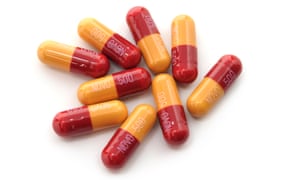Big pharma continues to walk away from investment in new antibiotics and there are alarmingly few useful new drugs in the pipeline to deal with the worsening crisis of antibiotic resistance, according to the World Health Organization.
Two reports paint a bleak picture. Efforts to discover new antibiotics are “insufficient to tackle the challenge of increasing emergence and spread of antimicrobial resistance”, says a review of clinical development.
Most antibiotics being developed are hardly any improvement on existing drugs.
The limited research that is being undertaken is generally by small or medium-sized companies, “with large pharmaceutical companies continuing to exit the field”.
There have been only eight new antibacterial agents approved since 1 July 2017, but overall, says the report, “they have limited clinical benefits”. There has been one important success story: pretomanid has been approved for patients with drug-resistant tuberculosis. But it was developed not by a pharmaceutical company but by the not-for-profit TB Alliance.
It is particularly worrying, says the WHO, that there are no new drugs imminent against gram-negative bacteria, which can cause pneumonia, bloodstream infections, wound or surgical site infections and meningitis.
Of the 50 antibiotics in the pipeline, 32 target pathogens listed by the WHO in 2017 as a global priority. But most of the drugs have only limited benefits when compared with existing antibiotics. Only two are active against the multi-drug resistant, gram-negative bacteria, which, says the WHO, are spreading rapidly and require urgent solutions.
Gram-negative bacteria, such as Klebsiella pneumoniae and Escherichia coli, can cause severe and often deadly infections. They are a particular threat for people with weak or under-developed immune systems, including newborn babies, ageing populations, and people undergoing surgery and cancer treatment.
The director general of the WHO called on pharmaceutical companies to do more. “Never has the threat of antimicrobial resistance been more immediate and the need for solutions more urgent,” said Dr Tedros Adhanom Ghebreyesus. “Numerous initiatives are under way to reduce resistance, but we also need countries and the pharmaceutical industry to step up and contribute with sustainable funding and innovative new medicines.”
Only three antibiotics in the pipeline target the highly resistant NDM-1 (New Delhi metallo-beta-lactamase 1), which is causing alarm among experts. NDM-1 makes bacteria resistant to a broad range of antibiotics. That includes those from the carbapenem family, which are the last line of defence against antibiotic-resistant bacterial infections.
Hanan Balkhy, the assistant director-general for antimicrobial resistance at the WHO, said: “It’s important to focus public and private investment on the development of treatments that are effective against the highly resistant bacteria because we are running out of options. And we need to ensure that once we have these new treatments, they will be available to all who need them.”
The second report, a review of potential drugs still in the lab, shows more innovation, with 252 agents under investigation that could possibly target the pathogens on WHO’s list causing the greatest concern. But the agents have not yet been through safety or efficacy tests and will take at least 10 years to reach the market, if they prove to be viable.
The big pharmaceutical companies are not investing in antibiotic research because there is not a lucrative market for them. A novel drug needs to be kept for cases of dire necessity, not sold widely. Overuse will mean resistance to it inevitably develops and although the world badly needs the drugs, new classes of antibiotic are difficult to find.
Tim Jinks, head of the drug-resistant infections priority programme at Wellcome, said: “These reports highlight the urgent need to find options to sustainably fund antibiotics innovation. While we now have around 60 biotechs working on encouraging discoveries, these early stage companies have an almost impossible task ahead of them if big pharma and governments do not invest at late stage research and development. In the last year alone, we have already seen two promising biotechs go bankrupt. More will follow unless we urgently accelerate action to improve the commercial environment.”

